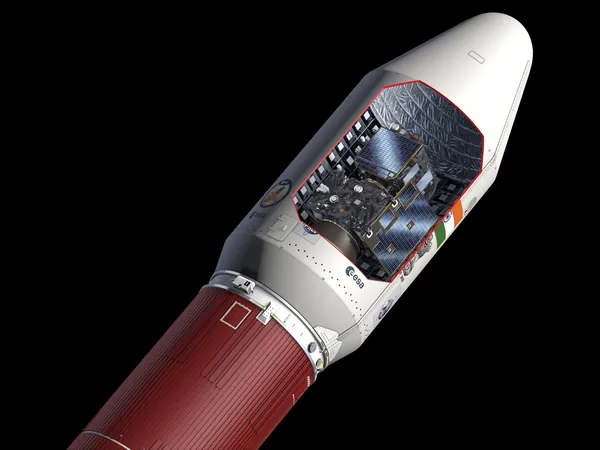
The Proba-3 Eclipse Maker Launch
2024-11-28
Author: Arjun
Prepare for an Out-of-This-World Event: The Proba-3 Eclipse Maker Launch is Here!
Mark your calendars! The European Space Agency (ESA) is gearing up for an extraordinary launch of its Proba-3 mission, designed to create artificial solar eclipses, set for December 4, 2024. The mission will be propelled into the skies atop a PSLV-XL rocket from the Satish Dhawan Space Centre in Sriharikota, India, at 11:38 CET (10:38 GMT, 16:08 local time).
Fans of space exploration can catch the launch live! Tune in via ESA Web TV or on the Indian Space Research Organisation (ISRO)’s YouTube channel, starting at 11:08 CET (10:08 GMT, 15:38 local time) for the countdown until liftoff.
Once in space, the two spacecraft that comprise Proba-3 will separate approximately 18 minutes after launch. The first contact with the ESA’s flight control team is anticipated shortly thereafter, about 15 minutes post-liftoff, from their facility located in Redu, Belgium.
Proba-3 stands as a groundbreaking endeavor within ESA’s in-orbit demonstration missions, involving two spacecraft configured for precise formation flying—accurate to within a single millimeter (about the width of a human fingernail). The two spacecraft will align perfectly, precisely 150 meters apart, to emulate the total solar eclipse phenomena.
This mission's primary objective is to allow the 'Occulter' spacecraft to block out the sun's intense glare, mimicking the effect of a total solar eclipse. This will enable the 'Coronagraph' spacecraft to observe the solar corona, the sun's outer atmosphere, revealing details that are a staggering million times dimmer than the sunlight itself. Unlike the rare total solar eclipses that occur on Earth every 18 months, Proba-3 will create solar eclipses on demand, with the ability to observe the sun's edge more closely than any other orbiting instrument, at only 1.1 solar radii distance. The mission can sustain eclipse-like conditions for a remarkable six hours during each 19-hour 36-minute orbit.
In addition to its eclipse-making capabilities, Proba-3 will test advanced formation flying techniques including distance manipulation between the spacecraft and coordinated targeting—essentially functioning as a larger single virtual instrument extending about 150 meters across. This novel strategy promises a revolutionary way to conduct space missions, allowing shared instrumentation across multiple platforms.
The mission will employ India’s PSLV-XL launcher—a high-performance, cost-effective rocket that serves well for meticulously budgeted demonstration missions. Proba-3’s mission will orbit in a highly elliptical trajectory, soaring over 60,000 kilometers from Earth to conduct its experiments in the gravitational sweet spot, where Earth's influence is minimized, requiring less fuel for maneuvering.
Significantly, this launch marks the first time an ESA mission will utilize an ISRO launcher since the launch of Proba-1 back in 2001.
The Proba series, derived from the Latin phrase meaning 'Let’s try,' has consistently pioneered innovative technologies since its inception, with Proba-1 launching in 2001, followed by Proba-2 in 2009 focusing on the Sun, and Proba-V in 2013 dedicated to vegetation observation.
Get ready for a cosmic spectacle—you won’t want to miss witnessing the dawn of a new era in space exploration with the launch of Proba-3!


 Brasil (PT)
Brasil (PT)
 Canada (EN)
Canada (EN)
 Chile (ES)
Chile (ES)
 España (ES)
España (ES)
 France (FR)
France (FR)
 Hong Kong (EN)
Hong Kong (EN)
 Italia (IT)
Italia (IT)
 日本 (JA)
日本 (JA)
 Magyarország (HU)
Magyarország (HU)
 Norge (NO)
Norge (NO)
 Polska (PL)
Polska (PL)
 Schweiz (DE)
Schweiz (DE)
 Singapore (EN)
Singapore (EN)
 Sverige (SV)
Sverige (SV)
 Suomi (FI)
Suomi (FI)
 Türkiye (TR)
Türkiye (TR)